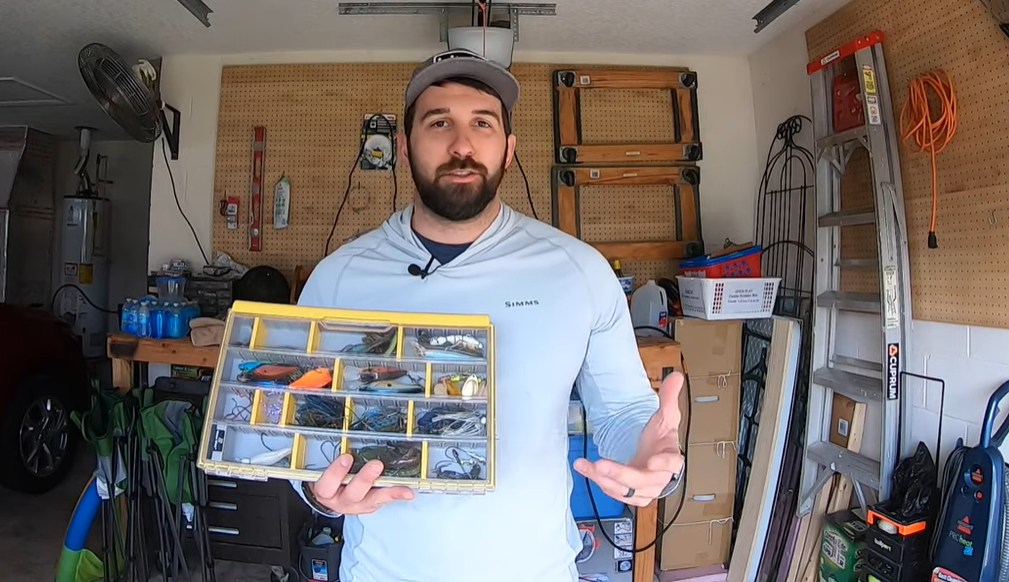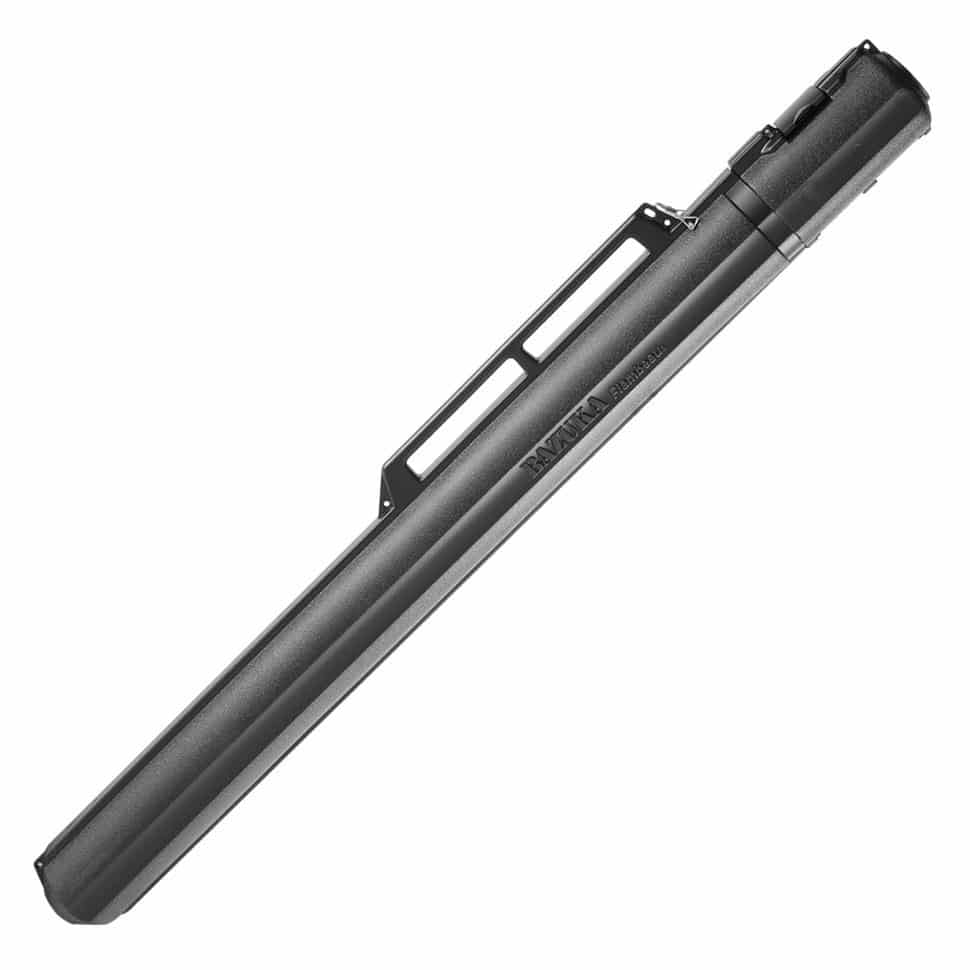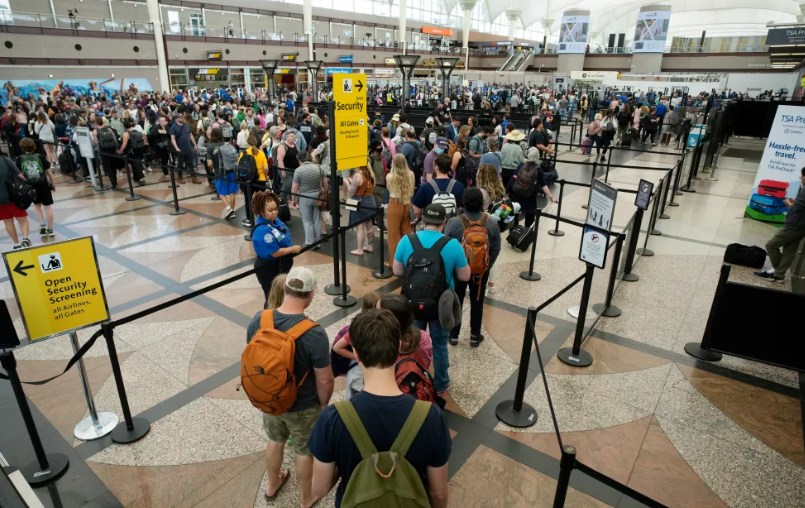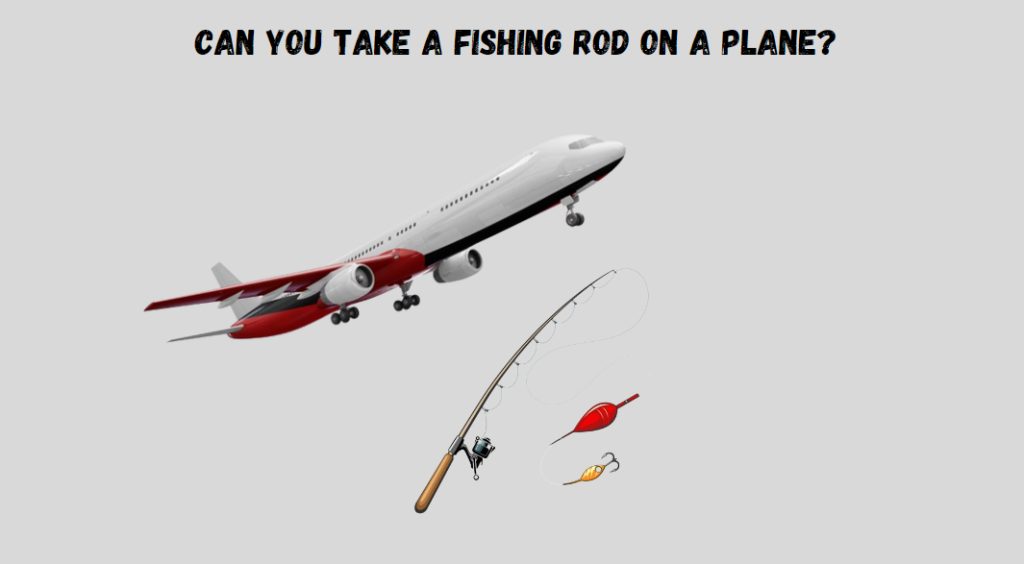Yes, you can take a fishing rod on a plane, but regulations vary by airline. It’s often considered carry-on or checked baggage, subject to size and security restrictions.
Traveling with fishing gear has become a common concern for angling enthusiasts. Ensuring you can bring your fishing rod on your next flight requires a little preparation and knowledge of airline policies. Check with the specific airline beforehand to understand their size and weight limitations, as well as any additional fees that might apply.
This pre-travel step is crucial to avoid any surprises at the airport. Keep in mind that while the TSA allows fishing rods as carry-on or checked luggage, they must meet size regulations to fit in overhead bins or under the seat in front of you. Packing your rod in a hard case can protect it during handling and transit. Remember, an informed and prepared approach will make your travel with fishing gear hassle-free.
Introduction To Air Travel With Fishing Gear

Imagine standing by a serene lake, casting your line into the crisp, clear water just as the sun begins to rise. This dream scenario is what drives agrarians toward destination fishing trips, where the allure of catching exotic fish in breathtaking locales becomes irresistible. But, with adventure often comes the query: Can you take a fishing rod on a plane? The answer is as intriguing as the quest itself, and it all starts with understanding the regulations of air travel with fishing gear.
Understanding TSA Guidelines For Fishing Equipment
The first step in Commencing on your angling adventure by air is to familiarize yourself with the Transportation Security Administration (TSA) guidelines. These rules are crucial in determining what items can accompany you in your carry-on and what must be checked. Let’s reel in the facts:
- Fishing rods are generally allowed as carry-on luggage, but length restrictions may apply depending on the airline.
- Sharp fishing tackle such as large hooks or tools should always be placed in checked baggage.
- Small tackles such as flies or jigs can usually be carried on, but it’s wise to check with your specific airline.
| Item | Carry-On | Checked Baggage |
|---|---|---|
| Fishing Rods | Yes (restrictions apply) | Yes |
| Large Fishing Tackle | No | Yes |
| Small Fishing Tackle | Usually (check with airline) | Yes |
It’s essential to check both the TSA guidelines and your airline’s policies before heading to the airport to ensure a smooth check-in and boarding process for your fishing gear.
The Rising Popularity Of Destination Fishing Trips
As more people seek unique vacation experiences, destination fishing has surged in popularity. Every year, scores of fishing enthusiasts pack their tackle boxes and travel to domestic and international waters teeming with prized catches. With the growth of eco-tourism and the appeal of getting back to nature, these trips offer an unmatched combination of adventure and tranquility.
- Fishers are scouting for both freshwater and saltwater hotspots, from Alaska’s salmon-rich rivers to the vibrant reefs of the Caribbean.
- For many, it’s not just about fishing; it’s a chance to experience different cultures, cuisines, and landscapes.
- The demand for specialized trips like fly fishing excursions or deep-sea charters has soared.
Whether you’re a novice or a seasoned pro, packing your fishing rod and setting off by plane to the world’s most illustrious waters is an experience you won’t forget – and one that requires savvy travel preparation.
Packing Your Fishing Rod For Air Travel
Heading to a far-flung fishing paradise shouldn’t mean leaving your trusty rod behind. Traveling with fishing gear can seem daunting, but there’s good news: airlines often allow fishing rods on planes. To guarantee your rod arrives in top condition, proper packing is key. Understanding air travel regulations and utilizing the right case and packing strategies will make your journey smoother. Prepare to cast your line upon arrival by following these best-practice guidelines.
Choosing The Right Fishing Rod Case For Flights

Let’s face it: airports and airplanes are not the gentlest environments. The right case is essential to protect your rod from the inevitable bumps and jostles. Hard-sided cases offer the ultimate protection, constructed to withstand heavy impacts. They come in many sizes to accommodate different rod lengths and are often the preferred choice among anglers.
Be sure to pick one that’s airline-approved for checked luggage. Soft-sided cases could be an alternative if weight and storage are concerns, but consider opting for one with reinforced ends. Whichever you choose, ensure it fits within the airline’s size and weight restrictions to avoid extra fees.
Tips For Packing Rods To Prevent Damage During Transit
Even with a sturdy case, packing your rod effectively is vital. To start, disassemble the rod if possible. This reduces its length, making it more manageable and less likely to snap. Secure each component with Velcro straps or soft ties. When placing the rod inside the case, padding is your friend.
Use bubble wrap, foam, or even clothing to cushion the rod, filling empty spaces to prevent shifting. Pay special attention to the tips and guides, as these are the most vulnerable parts. If you have multiple rods, separate them with padding to prevent friction and scratches. Here’s a bullet-point list to ensure you’ve got everything covered:
- Disassemble the rod to manageable lengths.
- Secure the pieces with Velcro straps to avoid movement.
- Use generous padding, especially around vulnerable parts.
- Fill empty spaces to prevent shifting during transport.
- Separate multiple rods with additional padding in between.
Rod tubes and multi-rod carriers can also be useful. These items are specifically designed for transporting fishing equipment and come with built-in cushioning and separators. Remember to check the condition of your case before each trip and replace it if you notice any damage that could compromise protection.
By carefully selecting the right case and packing your fishing rod properly, you’ll be ready to hit the water as soon as you land. Let the adventure begin!
Airline Policies On Fishing Equipment
Stress-free travel with your fishing equipment starts with understanding the airline policies on fishing equipment. When planning a fishing trip that involves air travel, knowing the ins and outs of how different airlines handle fishing gear, including rods, can make the difference between a smooth trip and an unexpected snag. In this section, we’ll reel in the details about airline regulations, potential added costs, and tips to navigate through them seamlessly. Let’s Plunge in!
Comparing Different Airlines’ Policies On Fishing Gear
Each airline has a unique approach to transporting fishing gear. Airlines classify fishing equipment as sports equipment, which often has specific allowances and restrictions. Generally speaking, anglers can expect to bring along a fishing rod tube as either carry-on or checked baggage, but exact policies may vary based on the airline and the size of the equipment.
Key aspects to consider:
- Length restrictions: Most airlines designate a maximum length for carry-on rods.
- Number of items: Check how many pieces of equipment you’re allowed per person.
- Additional equipment: Inquire about policies on tackle boxes, bait containers, and other accessories.
- International vs. Domestic flights: Expect stricter regulations on international flights.
To provide a clearer picture, here’s a brief overview of a few airline policies:
| Airline | Carry-on | Checked | Max Length |
|---|---|---|---|
| American Airlines | No | Yes | 126 inches |
| Delta Air Lines | Limited | Yes | 115 inches |
| United Airlines | No | Yes | 115 inches |
Added Costs And Fees For Checking In Sports Equipment
When budgeting for your trip, don’t let unexpected costs cast a line in the water. Airlines often apply additional fees for checking in sports equipment like fishing rods, due to the oversized or irregular dimensions. These costs can be a fixed fee or variable based on weight and size.
Stay ahead of charges by:
- Reviewing your airline’s fee structure for fishing equipment before booking.
- Considering the purchase of a travel insurance policy that covers sports equipment.
- Looking into loyalty programs or credit card perks that may offer waivers on sports equipment fees.
Fees vary widely among airlines. Here’s an example comparison:
| Airline | Domestic Fee | International Fee |
|---|---|---|
| American Airlines | $30 | $150 |
| Delta Air Lines | Starting at $30 | Varies |
| United Airlines | Starting at $35 | Varies |
Guiding airline policies and fees for fishing gear might seem daunting at first. With the right know-how, you can steer clear of the potential stress and focus more on the thrill of the catch!
Navigating Airport Security With Fishing Rods

Commencing on an angling adventure often means traveling with your trusted fishing rod, but the anticipation of the journey can be laced with questions about whether your gear will make it past airport security without a hitch. Guiding Airport Security with Fishing Rods doesn’t have to be a daunting experience. With the right preparation and understanding of the security process, you can breeze through checkpoints and keep your focus on the big catch ahead. Here’s what you need to know before you head to the airport with your fishing rod in tow.
What To Expect At Security Checkpoints
The security phase is crucial for a smooth travel experience with your fishing equipment. Every airport has specific guidelines, but generally, you can expect Transportation Security Administration (TSA) agents to thoroughly inspect sports equipment, including fishing rods. While they may not be prohibited items, their size and shape can require special attention during the screening process.
Be ready to show your fishing rod, and have any other fishing gear neatly organized. A clear and coherent display of items can expedite the inspection. Anticipate potential questions from security personnel; providing quick and polite responses about your fishing rod and intentions can help smooth the process. It’s essential to check your airline’s policy ahead of time, as they may impose size or weight restrictions on carry-ons.
How To Properly Present Your Fishing Rod For Screening
Presentation is key to a hassle-free security check. Start by protecting your rod in a hard-shell case, which not only secures it from accidental damage but also makes it easier to handle during the process. If your rod is collapsible, ensure it’s reduced to its smallest size to avoid any issues with oversized items.
- Detach any reels or hooks and store them separately.
- Label your case clearly with your name and contact information.
- Remove any loose pieces or accessories that can come off and get lost.
When it’s time for screening, communicate with the TSA agent. Inform them that you are carrying a fishing rod and be prepared to open the case for inspection. Following these steps will likely lead to a more efficient and successful passage through airport security, setting the stage for an exciting fishing trip with your rod by your side.
International Travel With Fishing Rods

Commencing on an international trip with your fishing rods can transform a standard vacation into an unforgettable angling adventure. Yet, one might wonder about the feasibility of traveling with fishing gear through different countries. Understanding the rules and preparing for the journey can make all the difference, ensuring that you and your rods arrive at your angling destination without a hitch. Focusing on International Travel with Fishing Rods, let’s Plunge into what you should know before taking your fishing gear abroad.
Country-specific Regulations On Fishing Gear
When traveling internationally with fishing gear, being aware of individual country regulations is crucial. These regulations can vary widely and might affect the type of fishing gear allowed into the country, the required documentation, and any restrictions imposed on the items. Airlines also have their own set of policies about the carriage of sports equipment, which must be considered as well as country-specific laws.
- Size and Dimension Restrictions: Some nations limit the dimensions of sports equipment, including fishing rods, that can be brought in. Always measure your fishing rod case and compare it with the destination country’s size regulations to avoid any issues at the airport.
- Permit Requirements: Certain jurisdictions may require special documentation or permits to bring in fishing gear. It’s essential to research and procure these documents well ahead of your travel dates.
- Protected Species: Be aware of restrictions regarding equipment related to the catch of certain protected species. Some territories may have bans or limitations on gear types like spears or large hooks.
It’s advisable to visit the official customs or tourism websites of the destination countries for the most current regulations. Alternatively, reaching out to their consulates or embassies can also provide valuable guidance.
Dealing With Customs And Import Duties On Fishing Equipment
Guiding through customs with fishing gear can be smooth sailing with the right knowledge and preparation. Customs and import taxes are potential hurdles that anglers should be ready to address. Each country’s customs authority may impose different rules regarding fishing equipment, and import duties can significantly increase the cost of bringing your gear along.
Here’s a breakdown of what to expect:
| Item | Possible Customs Requirement | Possible Import Duty |
|---|---|---|
| Fishing Rods | Declaration on entry; sometimes a temporary import permit. | Varies by country; often a percentage of the gear’s value. |
| Tackle | May need to be declared separately in some cases. | Depending on quantity and type, might attract import taxes. |
To ensure a hassle-free experience:
- Always keep receipts of your fishing equipment to facilitate customs valuation.
- Research beforehand if a Carnet is applicable for your equipment – a Carnet serves as a passport for goods, helping avoid import duties under temporary import.
- Be honest and upfront about your intentions and the contents of your fishing gear to customs officers to avoid any misunderstandings or complications.
Packing your rods in a durable and recognized fishing rod travel case can also help signal to customs officials that the equipment is for personal use, which might simplify the inspection process. Remember, each country’s customs policies are subject to change, and having the latest information from official sources is invaluable.
Maximizing Your Fishing Trip Experience
Fishing enthusiasts often dream of casting their lines in exotic waters, reeling in rare catches, and forging memories on both familiar and foreign shores. Commencing on a fishing-centric vacation can be a thrilling adventure, but it requires some special considerations—especially when traveling by air. Knowing the ins and outs of flying with your fishing gear is crucial to ensuring a hassle-free journey. Let’s Plunge into how to Increase your fishing trip experience by understanding airline regulations regarding fishing rods and preparing effectively for your angling escapade.
Finding Fishing-friendly Airports And Destinations
Before booking your flight, research is key. Begin by identifying airports that are close to fishing hotspots and have accommodations for traveling anglers. Some airports even offer special services for sports equipment, including fishing gear:
- Accessibility to fishing locations: Look for airports with easy access to lakes, rivers, or oceans.
- Availability of gear rental services: Certain destinations may provide on-site or nearby fishing gear rental options.
- Knowledgeable staff: Opt for airports where staff are familiar with handling fishing equipment.
Here are examples of fishing-friendly airports for inspiration:
| Airport | Nearest Fishing Spot | Distance |
|---|---|---|
| Miami International Airport (MIA) | Florida Keys | 70 miles |
| Vancouver International Airport (YVR) | Fraser River | 15 miles |
| Kona International Airport (KOA) | Kailua-Kona | 13 miles |
Essential Accessories For A Seamless Angling Adventure
Packing the right accessories can make or break your fishing trip experience. While the fishing rod is the star of the show, accompanying gear plays supporting roles of equal importance.
- Fishing Rod Case: A durable, airline-approved rod case is a must-have to protect your rod during transit.
- Compact Tackle Box: Choose a tackle box that is spacious enough to carry essentials but compact enough to comply with carry-on regulations.
- Multi-tool and Pliers: These tools are indispensable for cutting lines, removing hooks, and making quick repairs.
- Travel-friendly Apparel: Pack clothing that is suitable for the climate of your fishing destination.
- Documentation: Keep your fishing license and any necessary permits handy to ensure compliance with local regulations.
Remember to always check the latest TSA guidelines and the specific airline’s policy about bringing fishing gear as carry-on or checked luggage. This will avoid any last-minute surprises and guarantee that your angling gear arrives safely and is ready for your fishing adventure.
Frequently Asked Questions On Can You Take A Fishing Rod On A Plane
Are Fishing Rods Allowed In Carry-on Luggage?
Fishing rods are generally allowed as carry-on luggage. It’s important to check with the specific airline for their rules. Rods must fit within the airline’s size restrictions for carry-on items.
Can You Bring Fishing Equipment On International Flights?
Yes, you can bring fishing equipment on international flights. Be mindful of size and weight limits, and declare any items if required by customs or security at your destination.
How Do You Pack A Fishing Rod For Air Travel?
To pack a fishing rod for air travel, use a hard travel case or a rod tube. Ensure that it is well-padded and secure. The tube should be marked as fragile to alert handlers.
What Are TSA Guidelines For Fishing Rods And Tackle?
The TSA allows fishing rods and tackles in checked luggage. Tackle should be carefully packed. Sharp items like hooks should be sheathed or securely wrapped to prevent injury.
Conclusion
Traveling with your fishing rod is possible with some foresight and preparation. Always check your airline’s regulations before flying, and consider opting for a travel-specific fishing rod for convenience. Packing properly can ensure your gear arrives safely, letting you cast a line wherever you land.
Happy fishing and safe travels!

